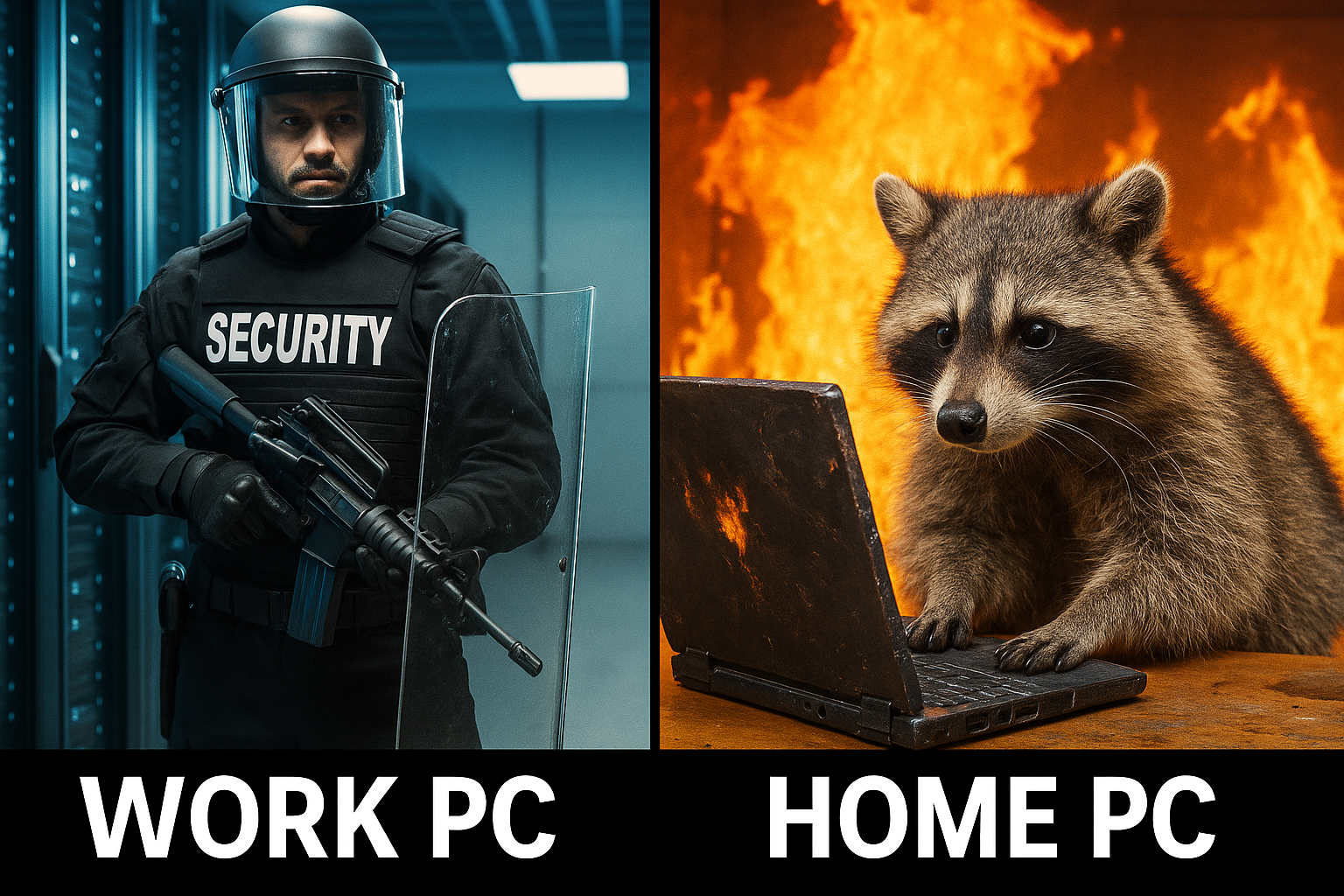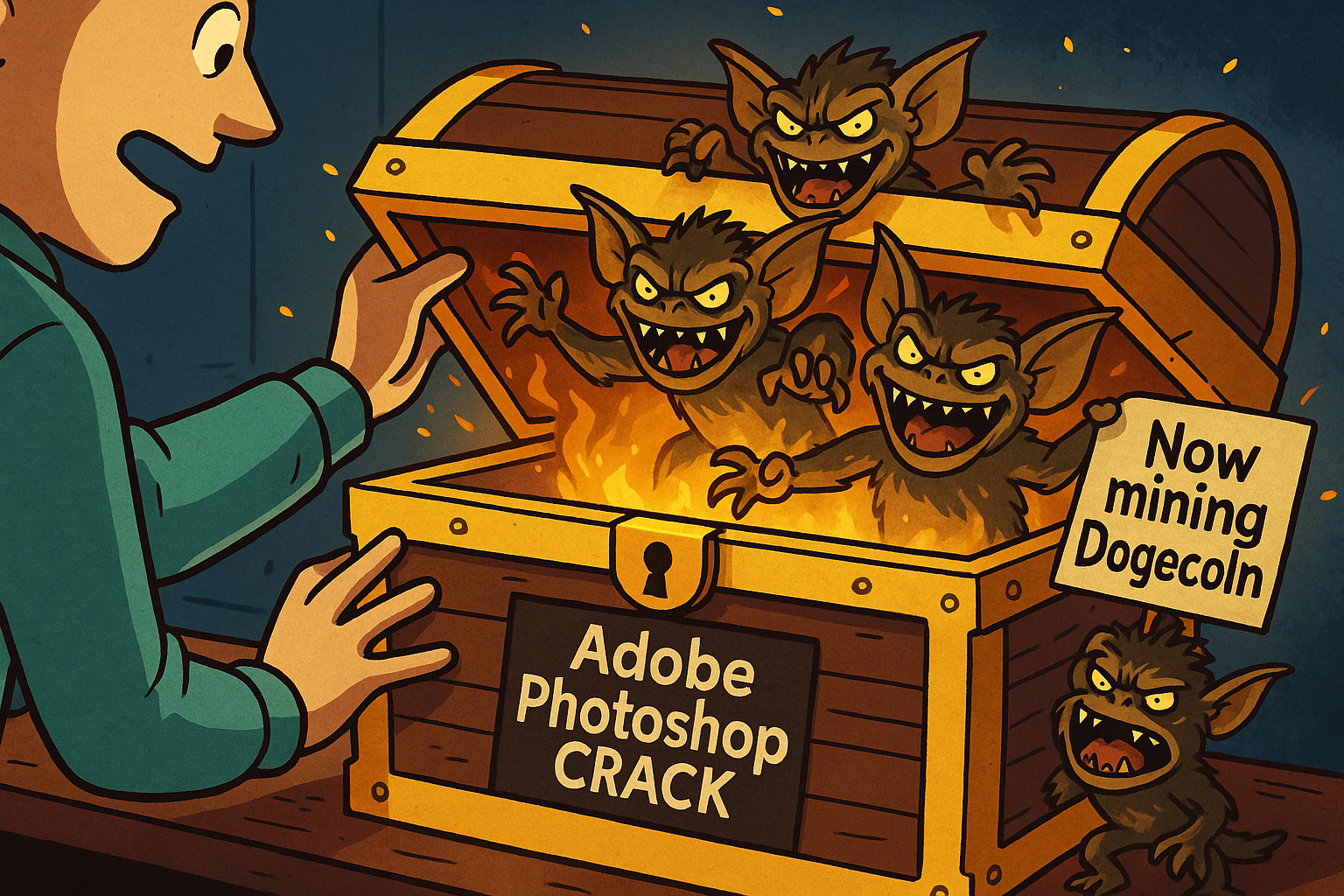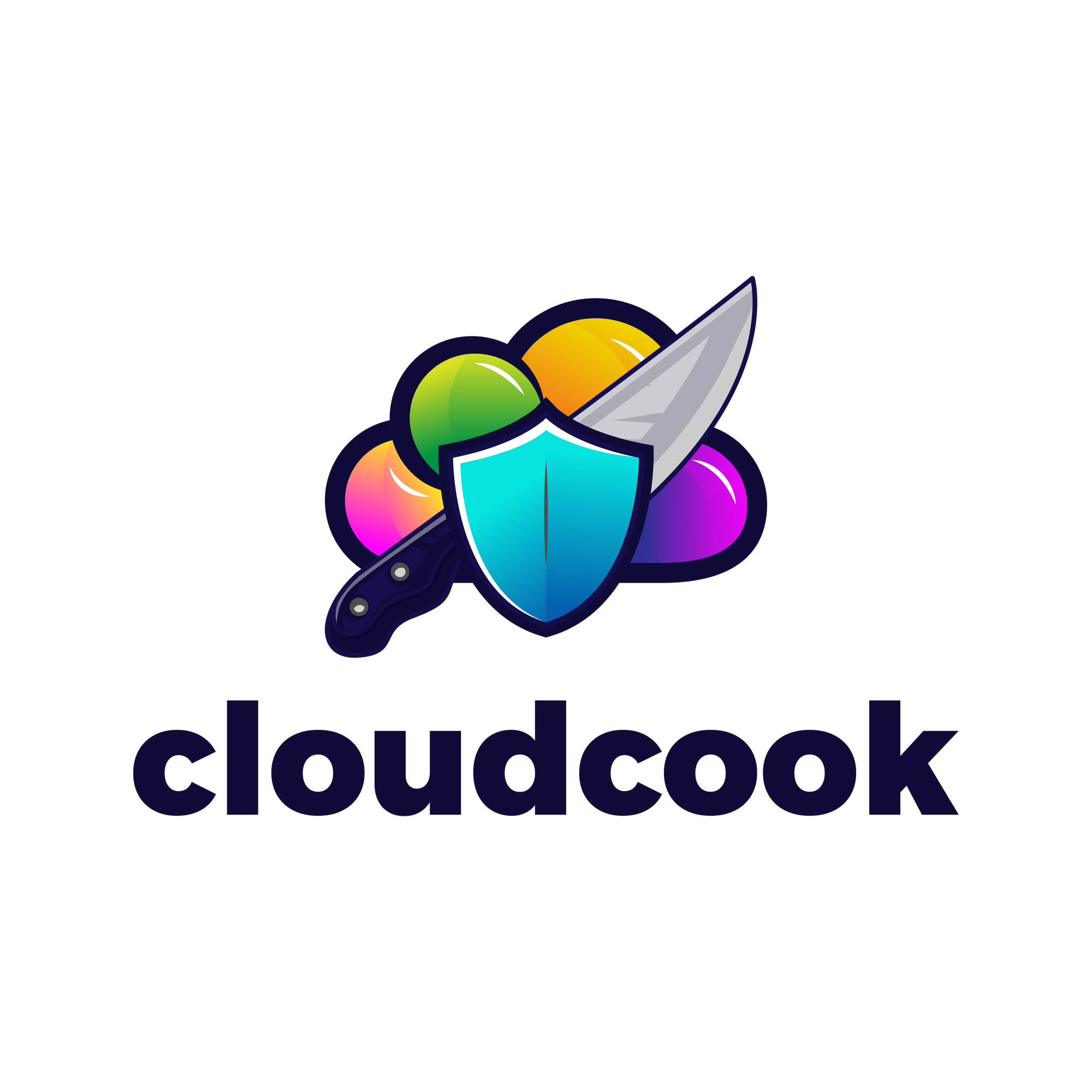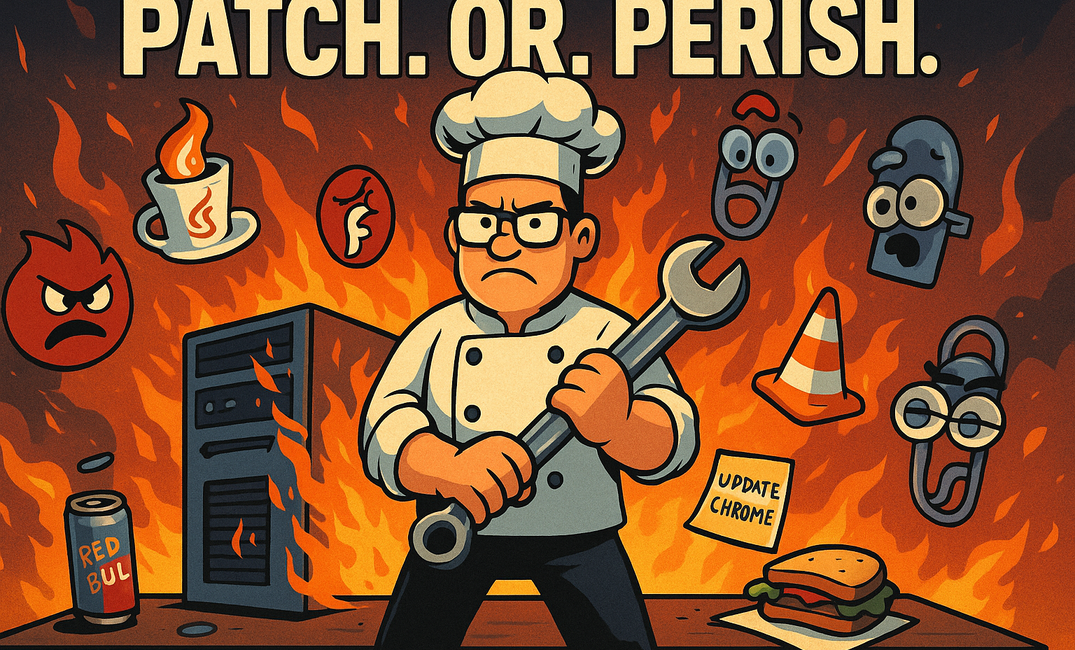Let’s be brutally honest, because sugar-coating is for marketing slides and failed vendor demos.
We spend our 9-to-5s preaching about zero-day vulnerabilities, automating patch deployments, yelling at SCCM (RIP) or Intune, and writing flowcharts titled “Why You’re Fired If You Disable BitLocker.”
But then you get home, boot up your RGB-overkill gaming rig, and ignore 87 pending updates like they’re the terms and conditions on a Zoom install. You know the ones.
“I’m not updating Chrome — it’s working fine.”
— You, moments before ransomware encrypted your cat photos and your crypto wallet.

The Double Standard is Real 😬
At work:
- ✅ Patch Tuesday gets treated like Christmas morning, minus the joy.
- ✅ CVEs are tracked like Pokémon. Gotta catch ‘em all — before they catch you.
- ✅ You audit third-party patching tools like your bonus depends on it. Spoiler: it does.
At home:
- ❌ Firefox is five versions behind and still somehow launches with a Yahoo homepage.
- ❌ Zoom still has the security model of a potato. A baked one.
- ❌ That VLC installer from 2016? Still kicking. Still ignoring.
The family laptop? Oh lord. That thing’s basically a malware sandbox with a free trial of Norton, eight browser toolbars, and 34 startup apps. You’re lucky if it boots before 2030.
Enter Patch My PC Home Updater — aka “Adulting for Nerds” 🛠️
Let me guess: you've got opinions on GPO, you once fought MDT and lived to tell the tale, and your Azure Automation runbooks are tighter than your jeans after lockdown.
Yet your home machine? That's a museum of unpatched regret.
Meet your savior: Patch My PC Home Updater. It’s free, lightweight, and doesn’t pop up fake alerts trying to sell you antivirus shaped like a clown.
It automates updates for over 300 apps — stuff like 7-Zip, Notepad++, VLC, Java (ew), Steam, Discord, and even things you forgot you installed after too much Red Bull.
Why it's actually brilliant:
- 💵 Silent installs: Because nobody wants to click "Next" 400 times.
- ⏰ Easy scheduling: Set it and forget it, like that Raspberry Pi project you swore you'd finish.
- ✅ App deselection: Yes, you can skip iTunes. We don’t judge. Much.
- ⚖️ No bloat: No creepy toolbars, no pop-ups, no fake registry cleaners from 2004.
Real Talk: Why This Actually Matters 🧠
You think your personal laptop doesn’t matter because you don’t run a SOC from your kitchen. But let’s unpack that fairy tale and sprinkle it with some modern reality — because this ain’t 2015, and nobody’s firing up the Cisco VPN client anymore:
- You log in with your Microsoft 365 creds.
Don’t pretend you don’t reuse passwords. Your “SuperSecure2022!” masterpiece isn’t fooling anyone. If your personal device gets popped, your entire Azure session token might be next — and those browser sessions stay active longer than the coffee in your mug. - We don’t VPN anymore — we browser into work.
That’s right. You fire up Edge or Chrome, hop into the Entra portal, SharePoint, Intune, maybe even the Power Platform — all from your personal machine. Your browser becomes the front door to your company’s crown jewels. If it's unpatched, every open tab might as well be labeled "please hack me." - Your personal email is a recovery address.
If that mailbox gets compromised, attackers could reset accounts you forgot even existed. Including admin accounts, your GitHub org access, or that shadow Entra tenant you swear was “just for testing.” - You are tech support for the entire family.
Congratulations. If your machine is infected, you’ll be spreading malware like it’s a family party. Auntie Linda’s desktop doesn’t need another toolbar, and your cousin’s Minecraft mod probably came bundled with a keylogger. - Shadow IT isn't just for others.
That side project you launched on a home box is now handling production data, integrating with your company’s tenant, or connected to a service principal that has more permissions than sense. Suddenly, your weekend project is a compliance nightmare. - Cookies and tokens and sessions, oh my.
Ever stayed logged in to your admin portal because you didn’t want to MFA again? Congrats. If your device gets compromised, those tokens can be scraped, reused, and abused. Pass-the-cookie attacks don’t care if you’re on a couch or in a data center. - You installed that cool browser extension that helps with tabs.
But did you vet it? Did you read the permissions? Of course not. That thing’s probably harvesting your clipboard and planning to sell your Outlook drafts on the dark web.
Bonus Round: Pirated Software — The Malware Jackpot 🎰
Let’s not pretend you’ve never downloaded something from "Crackz4U.biz" at 2 AM because Adobe wants your firstborn in exchange for Photoshop.
Pirated software is like picking up a USB stick in a parking lot — only with extra steps. That cracked copy of FL Studio? It’s probably mining crypto in the background while sending your browser history to a Telegram channel in Belarus.
Even worse? A lot of these cracks disable auto-updates by design because, y’know, the update server would immediately blow the whistle on your shady install. That leaves you vulnerable forever. Or at least until ransomware encrypts your pirated DaVinci Resolve project.
The moral of the story? If you absolutely must pirate (and let’s face it, we know you will), do it in a VM with no network access and for the love of Tux, don’t install it on the same machine you use to RDP into prod.
Or… hear me out… consider open-source alternatives. GIMP, Inkscape, Blender — they’re all powerful enough to do 90% of what you need without requiring a cracked DLL from 2011.

Quick Wins: Security That Doesn’t Require a PhD 🧠💪
Okay, so you’re not the NSA. You’re not reverse-engineering binaries for fun and your threat modeling usually involves whether to update Zoom now or after lunch. That’s fine. Securing your home setup doesn’t have to be a full-time job or a tinfoil hat hobby.
And you know what else helps massively? Decluttering Windows like it owes you rent.
🧹 Delete the Garbage — You Know the Stuff
Windows comes with more junk than a corporate SharePoint site. Xbox apps on a domain-joined PC? Candy Crush in 2025? Stop the madness.
Use open-source tools like:
- BloatyNosy – Removes pre-installed apps, useless features, and leaves your system cleaner than a fresh VM.
- ThisIsWin11 – A powerful swiss-army knife to tweak, debloat, and control Windows 11 settings.
- Windows10Debloater – Run it from PowerShell like a proper admin with trust issues.
- ChrisTitusTech Windows Utility – CLI magic for trimming the fat off your OS.
And don’t forget:
- Disable crap like Cortana, Xbox Game Bar, People, and other features that exist solely to annoy you.
- Kill unnecessary startup entries using Autoruns by Sysinternals (Microsoft-owned but gloriously effective).
- Uninstall print drivers, language packs, and OEM trialware that snuck in while you were blinking.
The result? A leaner, faster, more secure Windows machine that doesn’t beg for mercy every time you open Task Manager.
Here are some further no-brainer, zero-sweat upgrades that take minutes but pay off big — now with 100% FOSS seasoning:
- 🔐 Enable BitLocker. It’s built-in and free. Want an open-source alternative for cross-platform disk encryption? Go for VeraCrypt — the ghost of TrueCrypt still walks among us.
- 🛡️ Block ransomware the easy way. Controlled Folder Access is decent, but if you want to crank it to 11 with open-source flavor Hard_Configurator. This tool slaps a sane interface on Windows Settings Vodooo.
- 👁️🗨️ Limit rogue apps. If Smart App Control is missing in action or grayed out for eternity, go FOSS and paranoid with ConfigureDefender. It lets you push Microsoft Defender to its angry, overachieving teenager phase.
- 📵 Ditch Java and Flash. Seriously, it’s not 2004.
- 🌐 Use privacy-first DNS. Swap your ISP’s data-harvesting trash for Quad9, NextDNS, or AdGuard DNS.
- 🔑 FOSS your 2FA life. Use Proton Authenticator. Open-source, no ads, and no “accidentally sold to some crypto bro” nonsense.
- 🧽 Stop living as local admin. Create a regular user account for browsing, gaming, and accidentally clicking email links.
No SIEM, no Sentinel, no EDR licenses required — just basic hygiene and some open-source elbow grease. It’s the digital version of brushing your teeth and occasionally flossing. Ignore it long enough and yeah… rot happens.
Cloudcook's Pro Tips for Not Being a Walking Breach:
- 💼 Install Patch My PC Home Updater. It’s free. It works. It saves you from yourself.
- 🔒 Use a password manager. If your master password is written on a sticky note, we can’t be friends.
- ❌ Stop downloading random EXEs. GitHub is a better gamble than sketchy "Download4free.ru" links.
- 🔄 Enable auto-updates. Stop living on the edge with that 2019 version of WinRAR.
- 👀 Don’t skip Windows Updates because they reboot your PC. You know what else reboots it? Malware.
- ☠️ Ditch Adobe Reader. You don’t need it. It's a malware trampoline.
- 🤔 If your AV says "last scanned: 346 days ago," you’re living dangerously, my friend.
Final Words From the Burnt-Out Admin in the Mirror
We secure enterprise networks like our jobs depend on it (because they do). But we treat our home setups like they're a second-hand laptop from Ebay.
You wouldn’t let an unpatched Windows 11 box join your corporate domain. But your personal laptop? That thing's one wrong click away from becoming a botnet node.
If a vulnerability gets exploited at home and makes its way to work, you won’t just be fixing it — you’ll be explaining it…
...in a meeting… with your camera on… while your boss asks why the domain admin account logged in from your IP in the middle of the night.
Save your job. Save your data. Save your ass. Patch your crap.
Cloudcook out 🍳🔧 (and freshly updated)
P.S.: Go patch your parents' machines too. They’re still using Flash Player.


